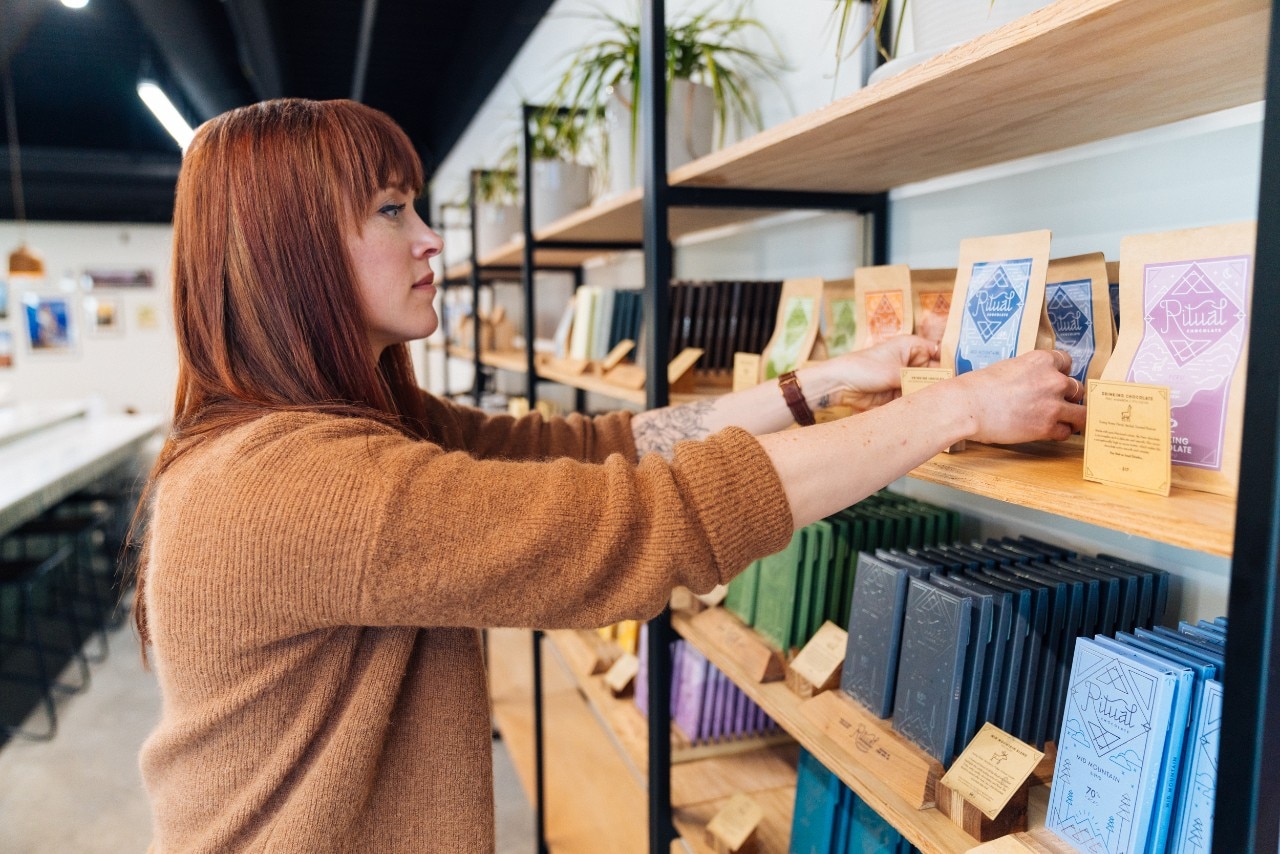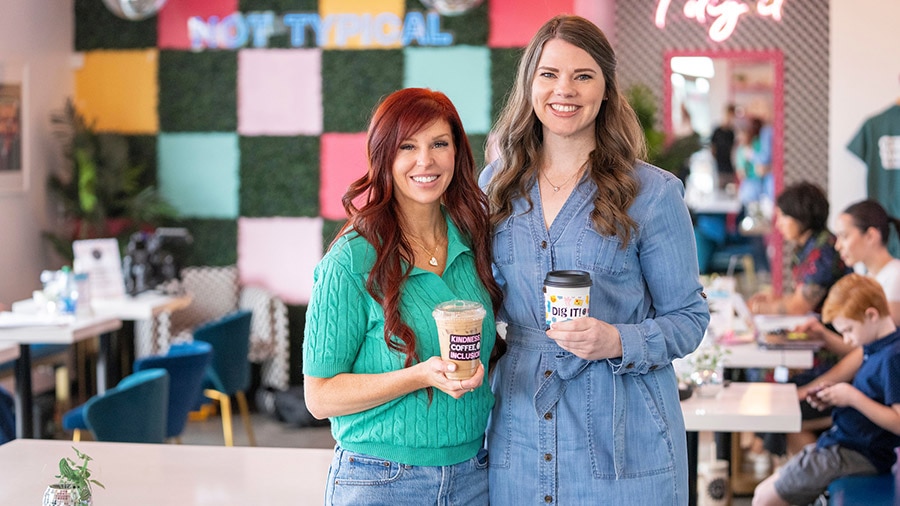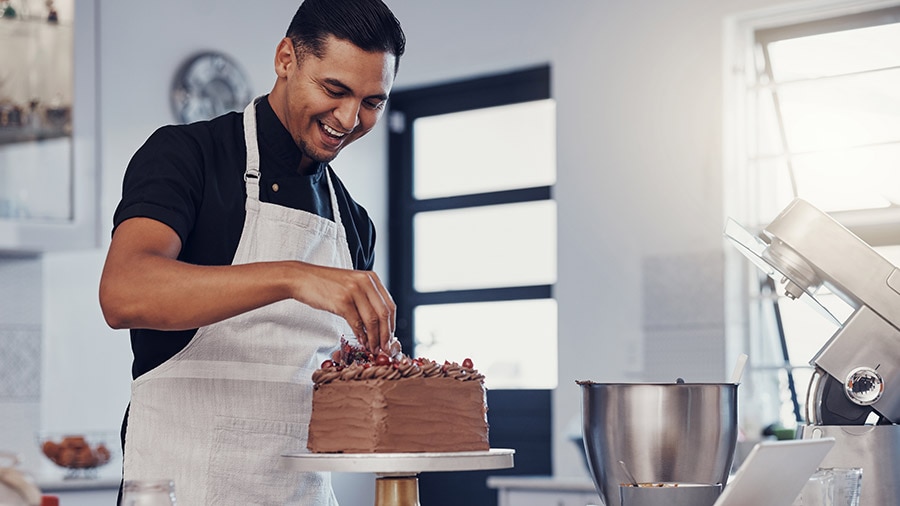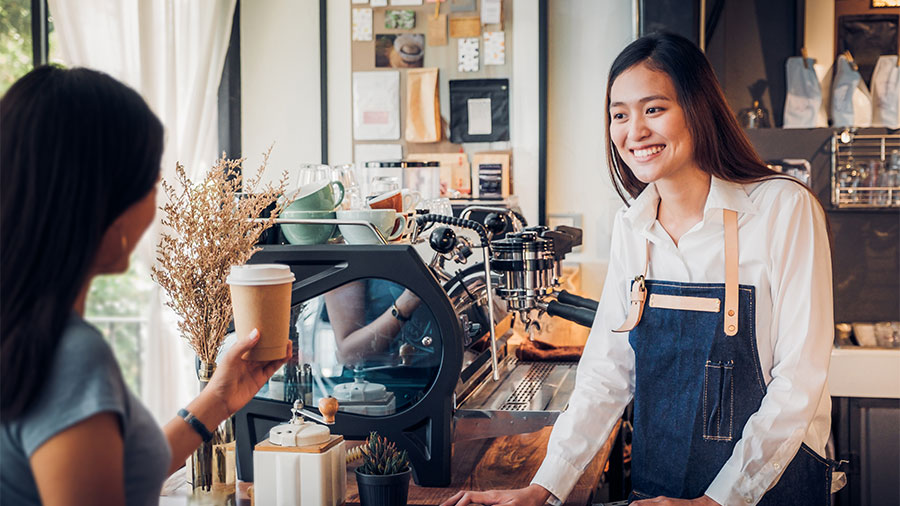Ritual Chocolate shares its roots—and a few industry secrets
QuickBooks may be the king of accounting, but Ritual Chocolate rules in cacao. It’s a difference in quality that starts right at the source.
“In 2008, we visited a cacao farm in Costa Rica, and it was just amazing to see the agricultural side of cacao,” Seear says. “[To see in person] that chocolate comes from a fruit, and just on the farming side, there's so much that goes into it.”
Since then, Seear and her business partner have visited many of the farms they work with, which mainly hail from Madagascar, Belize, Peru, Ecuador, and Uganda.
“Those are the main ones, but I'm actually just putting out a micro lot bar, where we're getting beans from this really cool little farm in the Philippines,” gushes Seear. When asked if she can actually taste the difference in flavor between beans from different countries, she gives an emphatic “Yes!”
“There’s a huge difference. It really doesn't take a connoisseur to taste it,” Seear explains. “It's not like wine, where you think, ‘Oh maybe I taste something.’ Our Madagascar [chocolate] is light, fruity, citrusy, and it's amazing because it's a dark chocolate. Our Ecuador is very fudgy-rich. It's a low cocoa butter bean, so it's got quite a thick and fudgy texture. And then our Belize is more of a balanced flavor, so it's like dried fruit with a nice rich base. And our Peru is very high in cocoa butter, so it's just really buttery and silky and has kind of floral, nutty notes. So they all have their own characteristics, and that's what’s so fun about sharing it with people.”
The difference, too, isn’t just Ritual Chocolate’s sourcing. It’s the care Seear and her team take with roasting their beans—a subject in which Seear is an expert. “On the farm side, before we even get the beans, they're harvested from the pods, fermented for about seven days, and then sun-dried. So when we get the beans, they've gone through this fermentation process, and there's so much complexity in the flavor, acidity and tannins. There's still a long way to go before it really starts tasting like chocolate.”
That’s where Seear and her team come in. ”We sort through the beans, lay them out, and we actually roast the beans in convection ovens—just a really light, slow roast. It's almost more of a toast, just trying to keep all the great flavors of the beans we're getting.”
Seear explains that the roasting process is one of the biggest differences between the quality of the chocolate people get from Ritual versus that made by large corporations like Hersheys or even Seear’s childhood favorite, Cadbury. “With industrial chocolate, they do a high roast, getting all the flavors out using poorer quality cacao. We’re doing the opposite, where we're getting really unique cacao and trying to keep all those amazing flavors in.”
Folks interested in getting a taste of Ritual Chocolate’s amazing flavors don’t have to go to Utah to experience the difference, though making the trip does come with a few perks.
“We have a small cafe attached to our factory that we share with a coffee roaster who's in the same building,” she says. Customers can grab a hot drink—including Ritual Chocolate’s out-of-this-world hot cocoa—then do a factory tour and tasting. “It’s really fun to get people in, just to experience the whole process. There's so much that goes into chocolate making, and I think people are really interested to learn more. So it's fun to get people in and share that.”














